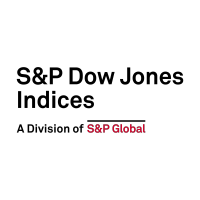Tag Archives: passive management
Chasing Performance
“…sometimes I’ve believed as many as six impossible things before breakfast.” – The White Queen, Through the Looking Glass Should an asset owner rely on historical performance data to select managers? The efficacy of doing so depends on the answers to three questions: What fraction of the manager universe is truly gifted? How gifted are…
- Categories Equities, S&P 500 & DJIA
- Other Tags
- Categories
- Equities, S&P 500 & DJIA
- Other Tags
Active Success: Still Elusive
Anyone even vaguely conversant with our SPIVA® Scorecards will realize that most active managers underperform passive benchmarks most of the time. This result is robust across geographies and across time, and is reflected in our recently issued mid-year 2023 report for the U.S. market. Although the scorecard covers 39 categories of equity and fixed income…
- Categories Equities, S&P 500 & DJIA
- Other Tags
- Categories
- Equities, S&P 500 & DJIA
- Other Tags
Active or Agnostic?
In order to generate value for his clients, an active investment manager must deviate from a passive benchmark—by choosing sectors, or styles, or individual stocks that the manager predicts will outperform. The manager’s value is dependent on the accuracy of his predictions; the better he is at identifying the best sectors, or styles, or stocks,…
- Categories Equities, Factors, S&P 500 & DJIA
- Other Tags
Persistently Disappointing
If you’ve ever read a prospectus (or, for that matter, an S&P DJI research report), you know that “past performance is no guarantee of future results.” At one level, if you understand that, you understand the most important thing about S&P DJI’s Persistence Scorecards. For the U.S., Europe, Latin America, and Canada (with Australia coming…
- Categories Equities, S&P 500 & DJIA
- Other Tags
Unwisely Concentrated
Anyone familiar with our SPIVA Scorecards will recognize that most active managers fail most of the time. Anyone familiar with active managers will recognize that they can be quite creative in proposing both excuses and remedies for this historical record. One of their most persistent suggestions, in fact, is that active management simply isn’t active…
- Categories Equities, S&P 500 & DJIA
- Other Tags
Peak Passive and Market Efficiency
With more than $7 trillion tracking the S&P 500 alone, we estimate that index funds now encompass between a quarter and a third of the capitalization of the U.S. equity market. This extraordinary growth must surely rank as one of the most important developments in contemporary financial history. When will it end? For at least…
- Categories Equities
- Other Tags
Indexing’s Evolution in Indian Markets
Indexing, also known as index-based or passive investing, has been slowly but steadily growing and transforming asset management and financial markets in India. For more than a decade, there has been a strong preference for actively managed funds among Indian investors, and understandably so as historically these were the only financial products that dominated the…
Exploring Active vs. Passive in Latin America
How do active managers in Latin America stack up to their benchmarks? Discover the key takeaways from the latest SPIVA Latin America Scorecard with S&P DJI’s Tim Edwards and Ericka Alcántara.
- Categories Equities, Fixed Income
-
Other Tags
active management, Active vs. Passive, Brazil, Chile, Ericka Alcántara, indexing, Latin America, Latin American equities, Latin American Fixed Income, Latin American Funds, Mexico, passive investing, S&P Brazil BMI, S&P Chile BMI, S&P Dow Jones Indices, S&P Indices vs. Active, S&P/BMV IRT, SPIVA, SPIVA Latin America Scorecard, Tim Edwards
- Categories
- Equities, Fixed Income
- Other Tags
- active management, Active vs. Passive, Brazil, Chile, Ericka Alcántara, indexing, Latin America, Latin American equities, Latin American Fixed Income, Latin American Funds, Mexico, passive investing, S&P Brazil BMI, S&P Chile BMI, S&P Dow Jones Indices, S&P Indices vs. Active, S&P/BMV IRT, SPIVA, SPIVA Latin America Scorecard, Tim Edwards
Shooting Hoops with Michael Jordan: An Allegory
I am not a particularly good athlete, and perhaps the sport at which I am most inept is basketball. Despite that, let’s assume that I somehow challenge Michael Jordan, arguably the best player in the history of the game, to a free throw shooting contest. What are my chances of success? (Stay with me, I…
- Categories Equities, S&P 500 & DJIA
- Other Tags
Growth Managers’ Perfect Storm
Anyone familiar with our SPIVA reports will realize that most active managers fail most of the time. In 21 years of SPIVA data, a majority of large-cap managers underperformed the S&P 500 18 times; the most recent of the three exceptions came in 2009. Even in that context, 2021 was a year of above-average difficulty,…
- Categories Equities, S&P 500 & DJIA
- Other Tags











































